While overall the fundamental backdrop of the hog market is supportive as we move through Q4, one should not lose sight of the risks.
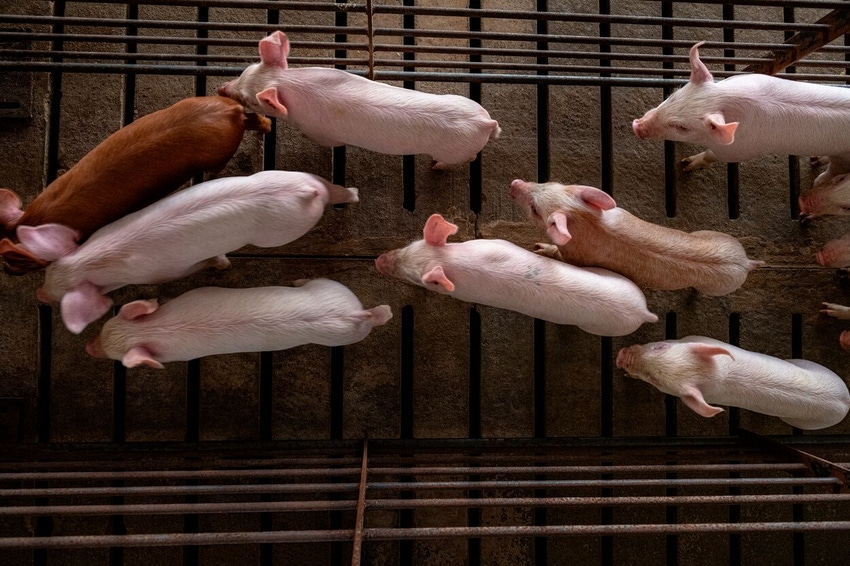
Halloween is a time of year when both kids and adults alike have fun being spooked but the hog market price action over the past month has been downright scary. December Lean Hog futures on the CME lost 18% in value over the second half of September, declining from $89 to $73/cwt. before recovering all of that lost value through October. As of this writing, the market has again turned down after facing resistance near the $90 level which has capped the contract on multiple occasions dating back to April.
The feed markets by contrast have been steadier over the past couple months, although both corn and soybean meal continue to trade at historically elevated prices which has raised the cost of production and breakeven levels into 2023. From a margin standpoint, projected profitability in Q1 has seen an enormous swing with the recent hog market volatility, moving from a positive $5.00/cwt. around the 80th percentile of the past 10 years to a negative $8.50 earlier this month before recovering to back above breakeven (Figure 1).
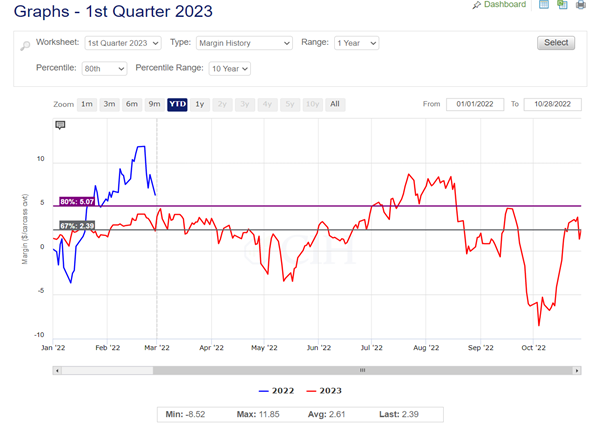
Fundamentally, there is a lot to be optimistic about for the hog market which helps justify the recent price recovery. The September Hogs and Pigs report confirmed lower inventories including a decline in the breeding herd and forward farrowing intentions that will tighten supplies moving into next year. Moreover, producers are current as evidenced by recent trends in both slaughter weights and spot prices paid in the cash hog market. The latest Cold Storage report featured a contra-seasonal decline in pork freezer inventories, led by hams which at 159.3 million pounds were down 3% from August and 18% below last year (Figure 2).
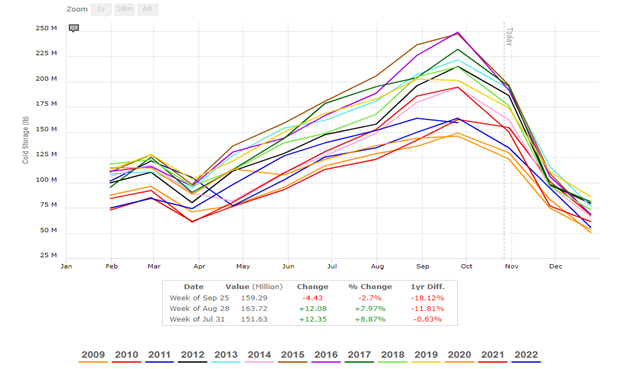
A September drawdown in ham stocks is rare. 2019 is the only other occurrence in the past 15 years in which frozen ham inventories declined from August to September. It is interesting to note that the pork cutout contra-seasonally increased into mid-November during 2019 (Figure 3).
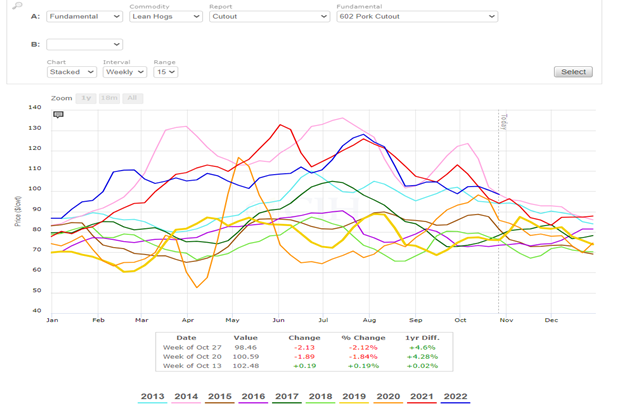
Turkey supplies are extremely tight this year following the avian influenza outbreak that hit commercial breeding flocks, and while ham prices are historically high, they remain competitive with turkey and an attractive alternative for Thanksgiving and Christmas celebrations (Figure 4).
Strong export sales and shipments to Mexico are likewise supporting ham values, as the Mexican peso has not lost value to the USD despite the aggressive pace of monetary tightening by the Federal Reserve which has strengthened the dollar significantly in forex markets. Recently, exports sales have even picked up to other markets such as Japan and South Korea, two countries whose currencies have lost considerable value to the USD this year. Meanwhile, recent strength in Chinese hog prices has raised speculation that they will be more active buyers of pork on the world market ahead of the Lunar New Year, although a recent plunge in DCE hog futures prices and a significant slowdown in their economy due to the ongoing zero-Covid policy are concerning.
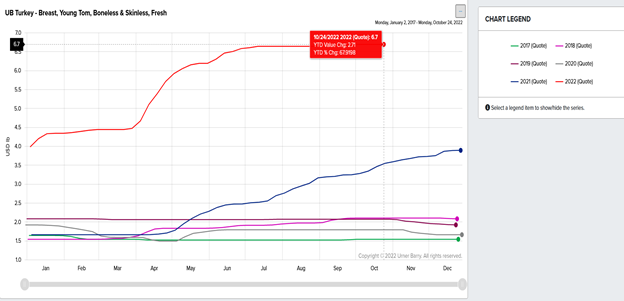
While overall the fundamental backdrop of the hog market is supportive as we move through Q4, one should not lose sight of the risks. The winter months historically have not been favorable for hog prices and the risk of recession here in the United States has risen significantly with the aggressive pace of Fed tightening. The potential impact on consumer spending should not be overlooked, and there are already indications that spending habits have changed for food consumed both at and away from home. Moreover, African swine fever remains a big risk factor and history has demonstrated that market reaction tends to be sharp and swift when disease issues suddenly disrupt exports.
With the recent recovery in both hog prices and forward margins, it may be prudent to look at strategies to mitigate downside risk, particularly for those who may be light on coverage in 2023. Given the potentially supportive fundamental backdrop, strategies that retain flexibility to participate in higher hog prices and improved margins may be prudent to consider. Livestock Risk Protection insurance may be a cost-effective way to put a floor under the market while allowing for the possibility to capture any further price advances. In addition to the reduced cost and cash flow advantages with this type of coverage, there may also be basis management applications that would be advantageous for Q1.
As an alternative to LRP, option strategies may likewise make sense to retain upside price flexibility while helping to put a floor under the market and protect against negative margin outcomes. While exchange-traded alternatives may be more costly than using LRP, the expense could be reduced by accepting a cap above the market which would correspond to historically high hog prices and strong margins should the market reach that threshold. As with any strategy, it is important to strike a balance between risk and opportunity that allows your operation to manage margin volatility and achieve long-term goals. The market has provided another opportunity to help mitigate forward exposure and it may be wise to take advantage of it.
Trading futures and options carries a risk of loss. Past performance is not indicative of future results. Insurance coverage cannot be bound or changed via phone or email. CIH is an equal opportunity employer and provider.
Source: Chip Whalen, who is solely responsible for the information provided, and wholly owns the information. Informa Business Media and all its subsidiaries are not responsible for any of the content contained in this information asset. The opinions of this writer are not necessarily those of Farm Progress/Informa.
About the Author(s)
You May Also Like



